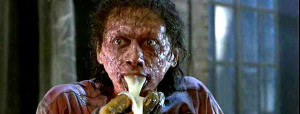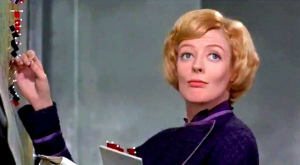For anyone who’s particularly keen to get an insight into this guy’s fear and frustration and confusion and claustrophobia during the early stages of stroke recovery, please sign up for apoplectic.me Tiny Letter distributions, if you haven’t already. I’ll be covering that today.

But as Longsufferinggirlfriendoftheblogbeth likes to say
It’s OK. We live in the future. He survived.
Two years and a month post-cerebrovascular insult, I’m six or seven weeks into my creative writing M.Sc. at the University of Edinburgh. The six or seven isn’t a confusion as to the passing of time, for once. Just a function of how the post-graduate semester works. But that’s not important right now.
Each week, classes include a workshop for which we rotate submissions of short pieces and comment and edit each other’s work, as well as class for which we read published work that illustrates a particular aspect of practice. Last week, we read Kafka’s A Hunger Artist and Katherine Mansfield’s The Fly in an examination of the short story form.
The Fly is the first instance of stroke writing in the course.

Mr. Woodifield […] peered out of the great, green armchair by his friend the boss’s desk as a baby peers out of his pram. His talk was over; it was time for him to be off. But he did not want to go. Since he had retired, since his . . . stroke, his wife and the girls kept him boxed up in the house [….]
Each of the candidates does an optional class, too; in my case, Acts of Storytelling, for which we read a novel each week. Last week, Toni Morrison’s Jazz, previously The Prime of Miss Jean Brodie, and so on.

For the end of this semester, as well as submitting a portfolio of our own fiction for the core courses, we have to write an essay for Acts of Storytelling that’s either a piece of literary criticism or a craft analysis essay. I’m knocking around some ideas right now, and it looks like I’ll write about how time is handled in a couple of our texts. The prompt is a quote from Margaret Atwood (whose John Donne-referencing Hair Jewellery we recently read for the core course):
Narration — storytelling — is the relation of events unfolding through time. You can’t hold up a mirror to Nature and have it be a story unless there is a metronome ticking somewhere.

Regular readers will have noticed that time is an obsession of this blog. Atwood’s remark, I’m reading right now, comes from her book Negotiating with the Dead: A Writer on Writing. The book is Atwood’s own edited version of six lectures she gave at Cambridge University in 2000 on “the position a writer finds him or herself in.”
I think this context is interesting, because — depending on how you choose to interpret time — 2000 is around thirty years after Vonnegut’s Slaughterhouse-Five, and ten years after Martin Amis’s Time’s Arrow (both unread by me as of the time of writing). Yet Atwood’s metronome is reminiscent of Newton’s “clock in the sky,” rather than Einstein’s — I suppose — infinite watches. On first blush, it seems the metronome metaphor is inapplicable to Slaughterhouse-Five‘s Billy Pilgrim, experiencing his life discontinuously, and the narrator and reader of Time’s Arrow, for each of whom time is experienced passing in reverse:
[The narrator] simply accepts that people wait for an hour in a physician’s waiting room after being examined, although at some points he has doubts about this tradition. Relationships are portrayed with stormy beginnings that slowly fade into pleasant romances. Although the narrator accepts all this, he is puzzled and feels that the world does not really make sense. — Ian Wiki

I suspect that I’ll find myself looking into how the story an author wants to tell impacts upon how time is handled. Thus, in Brodie, where Presbyterian Edinburgh fates are predetermined, it’s natural to casually flash forward to find out what happens to Mary MacGregor six-to-thirteen years after the main events of the novel. In Tracks, by the native American author Louise Erdrich, it makes sense that time is presented — at least in the table of contents — in a more linear sense, in line with characters who are intimately connected to the land.
But I agree that time is social. Harvests. Day and night. Diurnal clocks. Biorhythms and cycles. All that mushy wetware bio stuff [that is real].
(Thanks, Longsufferingreaderoftheblogpaul.)
I’d tell you from December 2014 how this plays out in the craft analysis essay, but I don’t want to weird you out. I will tell you that it’s really handy for the final paper novella I wrote next year.







On time: the film Memento. You’ve seen it?
Watched it once upon a time for a course on Film and Cultural Studies. Memento was the film screening for the course section on “narrativity”.
Come to think of it, Run Lola Run also has an interesting approach to time – time crunch, different possible futures. Memento’s reverse narration and short term memory disorder twists are probably more interesting though.
P.S. – Fab story. My novel also features a sine curve reference. I promise I’m not copying.
Ha! Not only have I seen it, I remember it!
The following conversation would take place from time to time during the initial stages of my recuperation:
“Someone will visit him in the morning, and I’ll ask, ‘Did Jonathan come to see you this morning?’
“He’ll say, ‘No’, but I know that he did. He’s like the guy out of “Memento”. You know, the movie about the guy who can’t create new memories?”
Of course, Beth meant the Guy out of Memento, and one day I finally cried out in exasperation, “How can you not remember Guy Pearce? He’s A BEAUTIFUL MAN!”
Thanks for the big ups on the story in the Tiny Letter. Much appreciated. My lawyers will be in touch. And you know, I’m very curious to maybe see some snippets of das Meisterwerk….
I’m slashing and burning scenes, rewriting, reordering. (It’s a non-linear narrative.)
In fact, I just killed one of my babies about 3 minutes ago. I had to cut a Calcutta subway scene that was interesting, but just not working in the overall flow.
I’m hoping by the end of November I’ll have a complete, shareable draft. Then you can see whichever snippets you like. It’s never been seen by human eyes. (Well, Beth did actually see some of the beginning pages at some point. But I aborted those monstrosities long ago.)
I should have saved those. Might be worth money someday.
Forget the money; they can go in the Museum of Ron!

From the beginning of the process, it looks like killing your babies is a good thing. The number of times in the past months I’ve heard and read that the real writing, the good writing, takes place during editing….
Another interesting thing I’ve heard, particularly with respect to short stories: look at a piece without the first and last fifty words. And the story in this week’s Tiny Letter was much improved by the lost of its last 50.
So, kudos on the killing of the monstrosities. I’ll look forward to those snippets.
Sorry for being so long in commenting
Editing is everything. As you know, I’ve been throwing out songs which sound like bad radiohead for a couple of weeks. Kill kill kill. In a good way.
The last words test is a good one also. I talked before about the new Mitchell book which was sort of, as you said, cgi gandalfy. But the fact that the last two words were “Sort of.” remind me what a great writer he is.
But one of the books I liked the most in my recent binge – station 11 – has the “lots of different times and timelines” feature in a very clever way.
And I was reading about writing a bit, and stumbled across the Elmore Leonard quote: “When you write, try to leave out all the bits the writers skip”
So yeah. Editing and reducing. Key. And time. It keeps on ticking. Ticking. Ticking. Into the future.
And now that song is in your head. So happy Sunday!
No problem! You’re Friendoftheblogpaul. Longsufferingreaderoftheblogpaul. Professor Paul. The Paulinator.
Bad Radiohead. Is that like really bad Autechre? (Man, Nerd Bait’s first inter-band flame war can’t be far off….)
There will be no flame war with David Mitchell, though, Gandalf or no. Only forelock tugging. We’ve got the last words of the final paper, then:
“So. There’s that.”
Also, you’re cruel. This is the only acceptable choon about time flying.
Leave out the bit the readers skip of course
Ha! “A Libretto For John Cage’s 4’33”, by Ricky Brown.
It’s like the copywriting adage:
Write as much as you think you need. Then cut it in half.
And then you should probably cut it in half again.
[A hyperlink will follow, detailing the blogger’s response to this post at appropriate length in light of having just finished the neo-Victorian “The French Lieutenant’s Woman”. Said response (i) includes the words “oblique”, “Marxism”, and “perform”, and (ii) was written according to the following process — 1. Write as much as you think you need. 2. Double it. 3. Double it again. 4. Exhume and kill Little Nell x2.]